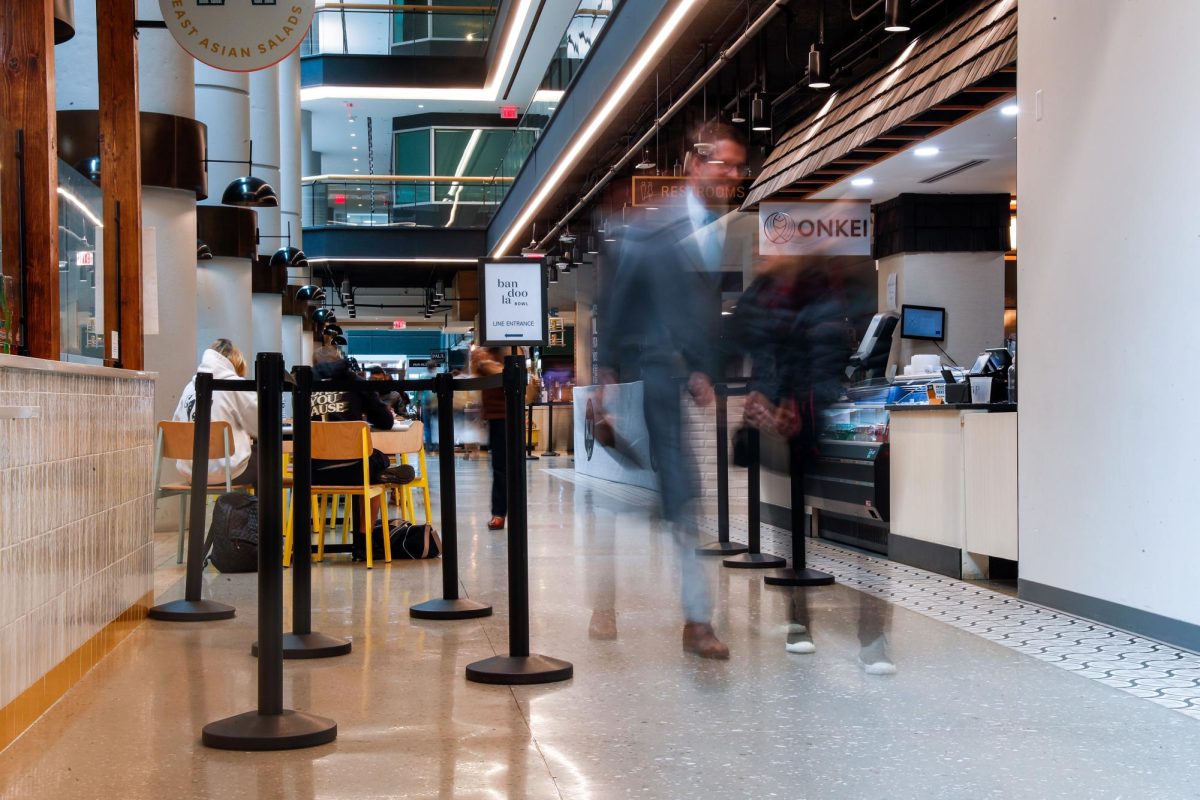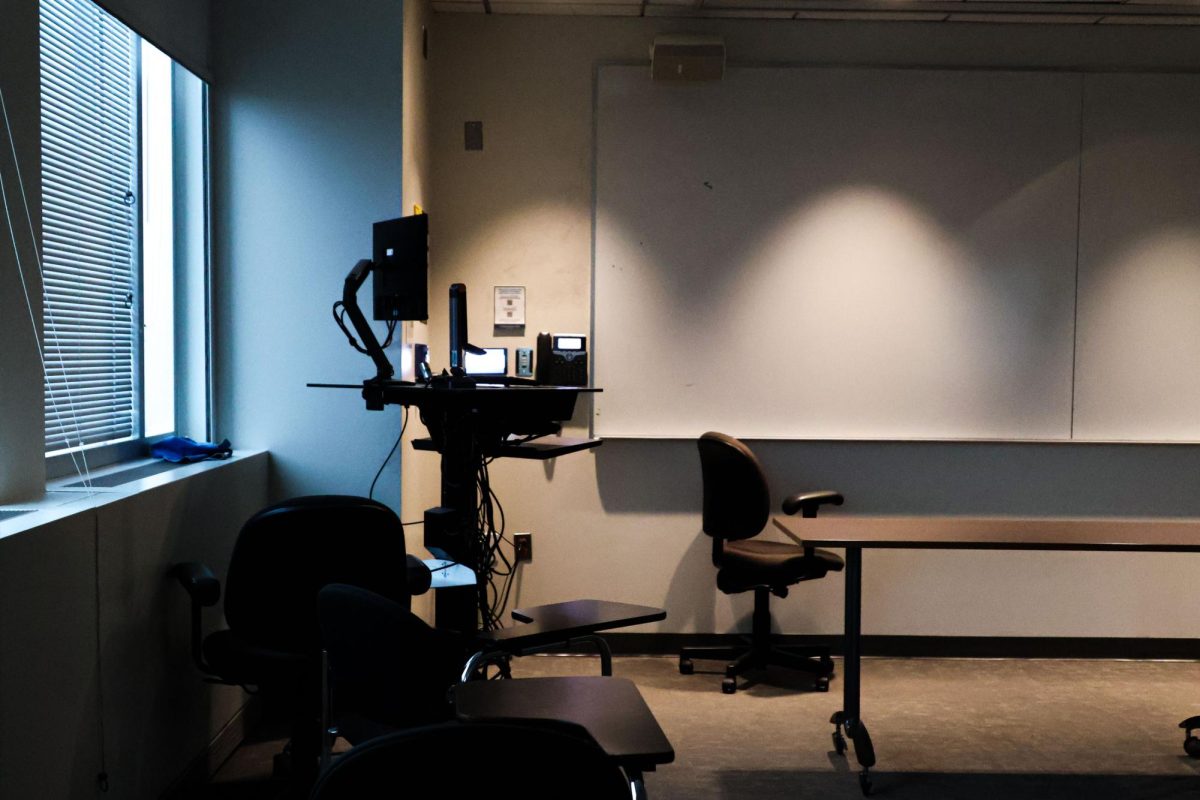More than a year of remote work during the COVID-19 pandemic left Danielle Fisher longing for human interaction.
To find a connection, Fisher, who used to work as an office manager for a technology company called The Knot Worldwide in Maryland, said she decided to switch jobs after finding a position in Foggy Bottom that would satisfy her social nature.
She said she didn’t want to wait around to start working with people again as her former company gradually phased workers back into the office in 2021 — which led her to jump into a new, in-person role as a property manager for the realty group overseeing Western Market, MidAtlantic Realty Partners, LLC.
“I wanted to move to an on-site role because I missed the interaction with people,” Fisher said. “There’s a lot you don’t get from behind the computer.”
Fisher is one of scores of workers who have returned to in-person work in the District in the last two years.
Prior to the pandemic, between 2017 and 2019, only 6 to 7 percent of District residents worked from home, in alignment with the national average. But once COVID-19 hit, D.C. had the highest rate of workers who worked remotely, with just under half the District’s workforce clocking in from home in 2021, during the height of the pandemic. As the city eased back into in-person work a year later, the number of remote workers fell to 33.8 percent.
Many of the District’s workers returned to their old stomping ground of Foggy Bottom, the home of the glimmering office buildings for some of the District’s largest employers like the World Bank and the International Monetary Fund. As of September, return-to-office rates sat at 62 percent in non-federal buildings and 33 percent in federal buildings in D.C.’s central business district, which includes Foggy Bottom.
Anthony Montione, a portfolio manager at Bank of America in the Foggy Bottom area, said he was working remotely for about 18 months during the pandemic at another company before leaving and transitioning to in-person work at the bank in August. He said he is more “wired” for in-person work, which allows employees to quickly meet coworkers and adapt to the office culture when starting at a new company.
“I like people,” Montione said. “I like to be around people.”
Montione said older generations want to return to in-person work more than younger generations.
“Demographically, people that are more experienced in the workforce probably are more apt to return in person,” Montione said.
Jennifer Eldridge, a senior climate environmental officer for the State Department, said she now works in person three days a week after starting her position in June 2021 and working online for six months. She said workers at the State Department transition back to in-person work differently based on their area of focus because some workers have to deal with classified information that forces them to work in person.
“Those folks have to be in the office just by the nature of their job,” Eldridge said.
The return of workers has played into the Foggy Bottom-GWU Metro station becoming the most frequented terminal in the District, with an average of more than 11,000 daily rides. Ridership at the station has steadily risen since 2021 after it dipped to a decade-low 4,129 average daily riders that year due to the pandemic.
Eldridge said she enjoys her hybrid schedule because it’s easier to have a healthy balance between work and life. She said she feels bad for workers who have children at home or are low in a company’s hierarchy, like interns, because they work in person most days and may not have many coworkers.
“I feel for people who need mentoring or who are learning the job and are still just trying to get to know their colleagues,” Eldridge said. “It’s really hard.”
Chris Barnes, the president of the American Federation of Government Employees Local 1534, a union representing federal employees, said President Joe Biden’s order in August for more federal employees to return to in-person work by the fall has negatively affected employee morale, hindering workers’ work-life balance.
He said the administration’s move to force people back into the office who could work remotely is making many of them rethink their federal employment.
“This is causing recruitment and retention issues at the Department of State and other agencies,” Barnes said.
Maria Garcia, the head of cultural affairs at the Embassy of Uruguay on the 1900 block of I Street, said the embassy allowed two people to work on each floor before fully returning to in-person work after all workers at the embassy started working from home when the pandemic hit.
“It was a little strange when we first started to go back to the office,” Garcia said. “No one really knew what could happen, if we could be exposed to something or not.”
Garcia said she found she got more work done when working at home and could be more creative because she could use more online platforms to curate content and online exhibits for the embassy’s cultural affairs initiatives. She said it was difficult returning to work in person, but the embassy did it gradually, and it felt “normal” quickly.
“When I was at home, just trying to fill my time, I was more creative in the work that I was doing,” Garcia said.
Jun Malaka, a human resource officer at the IMF, said the company did well during its transition to fully remote work at the beginning of the pandemic because of good management and IT infrastructure.
“We were able to deliver what was needed during the pandemic,” Malaka said.
Malaka said he returned to in-person work after about a year of working remotely during the height of the pandemic. He said it was “tough” to return to the office, but it eventually worked out after he adjusted.
“Having the right ingredients in terms of benefits, flexible work arrangements and proper communication with the rest of the teams working in a particular department — I think that will be great,” he said.





